Starting a CNC part manufacturing company? While funding may be the only requirement for starting a manufacturing business, there are numerous other factors to consider. It is critical to become acquainted with the various CNC machines available for producing high-quality parts. Furthermore, CNC machines use various materials to create intricate and accurate parts.
If you are unfamiliar with the various types of CNC machines and their operations, let us go over them in detail, including their applications, components, and mechanisms.
CNC machines are automated tools that have their movements and functions controlled by computer programming. In order to produce precise, intricate parts with high accuracy and efficiency, they are widely used in manufacturing processes. CNC machines can use actuators, drives, and software to produce a wide range of products.
Operators can generate intricate designs and translate them into a language that CNC machines can comprehend, like G-code, by using computer-aided design (CAD) software. This code acts as a set of instructions that directs the machine during the manufacturing process. Among the many benefits that CNC machines provide are higher output, better accuracy, and a decrease in human error.
A CNC machine system is made up of a number of fundamental components that cooperate to perform automated and precise machining tasks. Among these components are:
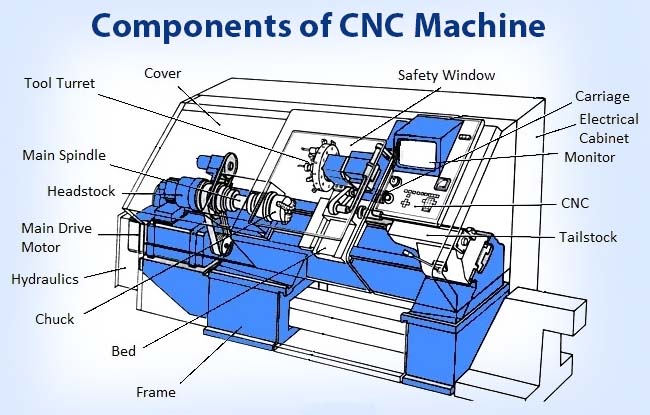
The device used to load CNC programs into a machine is called the "input device" of the machine. This input device could be a USB flash drive to transfer the finished program from another computer, a keyboard to directly input G-code commands, or wireless communication to download the program from another computer over the local network.
The actual machinery used to carry out the machining operations is called a machine tool. It could be a router, milling machine, lathe, or other device that can shape and cut materials.
A spindle for position and speed control and a sliding table are common features of CNC machine tools. While the spindle is normally controlled in the Z-axis direction, the machine table is typically controlled in the X and Y-axis directions.
The system's brain is called the machine control unit, or MCU. It interprets instructions, which are usually in the form of a G-code program, into exact movements and actions for the machine tool. MCU controls spindle speed, tool changes, motion control, and other machining-related parameters.
Servo motors drive the axes of the machine tool. These motors respond to signals from the MCU and provide accurate and controlled movements along the X, Y, and Z axes and any additional axes that the machine may have. Servo motors ensure precise motion control and positioning.
The different cutting tools and accessories used in machining are referred to as tooling. Drills, end mills, inserts, collets, and additional tool holders are among them. The particular machining operation and the material being processed determine which tools are best.
During machining, work-holding devices hold the workpiece firmly in place. These may consist of fixtures, chucks, clamps, vises, and other specialty tools. Workholding is essential to preserving the workpiece's accuracy and stability during the machining process.
The machine operator and the CNC system can communicate thanks to the operator interface. Either a computer screen, a control panel, or both may be present. Through the operator interface, the operator can monitor the status of the machining process, enter commands, and change the machining parameters as necessary.
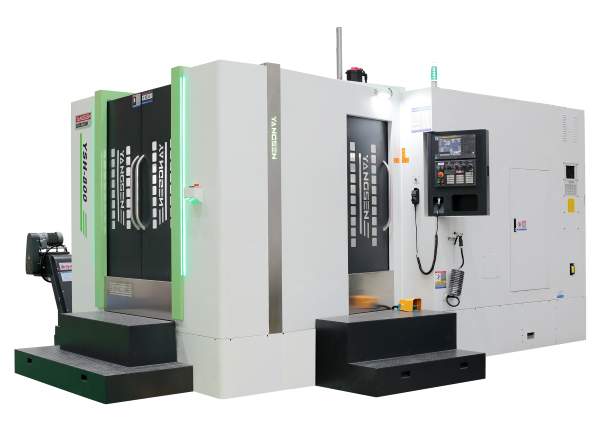
Firstly, they remove material from a workpiece and shape it into the desired shape or form using rotary cutting tools. These CNC devices assist in drilling, shaping, and cutting a variety of materials. They are frequently employed to create intricate and precise parts.
Bed
Supporting all other components, the bed serves as the machine's foundation. Its surface is wide, level, and stable, usually made of cast iron.
Spindle
The cutting tool is held in place by the spindle, which gives it motion. The blade is propelled by a motor, which spins it quickly to cut through the material.
The cutting tool is held firmly in place by the tool holder, though. Usually attached to the spindle, it can be changed out to fit different sized tools.
Worktable
The workpiece is placed on the worktable's surface. It can be shifted in various directions to precisely position the workpiece.
Axis
The CNC milling machines can move in various directions thanks to their X, Y, and Z axes of motion. The worktable can be moved up and down, side to side, and forward and backward using the X, Y, and Z axes, respectively.
Control panel
The operator enters commands and modifies the machine using this panel. Usually, it has a keypad, a screen, and additional buttons for operating the device.
Coolant system
The coolant system is used to keep the cutting area clean and to cool the cutting tool and the object being cut. This prevents the cut from overheating and preserves its quality.
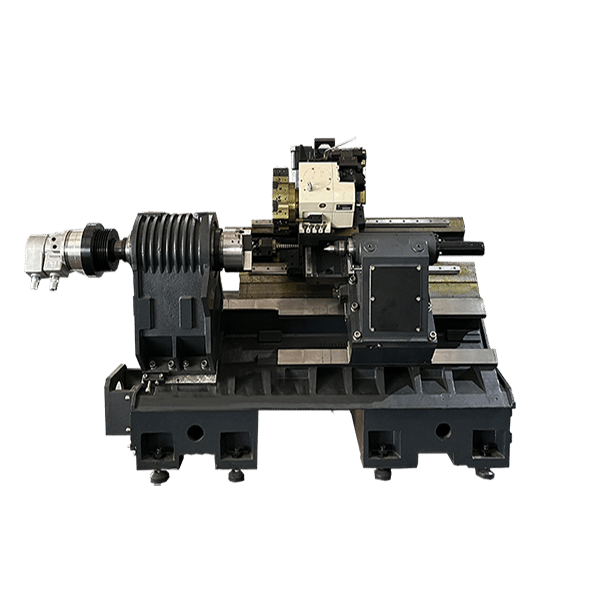
Another popular kind of CNC machine is the CNC lathe. CNC lathes churn workpieces against cutting tools to create cylindrical shapes. Materials for cutting and drilling, in particular, are useful for creating parts and shapes with intricate sizes and shapes. In the manufacturing industry, CNC machines are widely used due to their speed, accuracy, and versatility.
Headstock
The headstock contains the spindle that holds and rotates the workpiece. In addition, a motor powers the spindle.
Tailstock
The headstock and tailstock are located at opposite ends of the lathe. Long workpieces can be accommodated by the tailstock's mobility along the bed. It has a spindle with tool-gripping ability.
Tool turret
The portion that houses the cutting instruments used to form the workpiece is called the tool turret. It can be rotated to position various tools, and it is fastened to the cross slide.
Chuck
The chuck securely grasps and holds the workpiece in place while it is being cut. It is usually made of steel, but it can be adjusted to fit parts of different sizes.
Cross slide
The cutting tools are moved across the work by the cross slide. It moves in two directions, perpendicular to and parallel to the axis of the lathe, and is fixed to the carriage.
Carriage
The cross slide and tool turret are supported by the carriage, which slides along the bed. A motor powers it, and it can receive commands from the CNC system.
Another typical component of this type of CNC machine is the bed.
These devices cut and sculpt materials into the desired shapes and forms by using materials such as foam, metal, plastic, and wood. In industries like sign-making and woodworking, where precise material cutting and shaping are crucial, these kinds of CNC machines are frequently utilized.
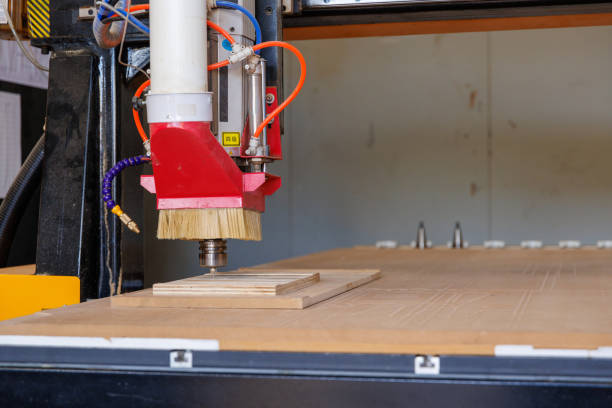
Cutting tool
Adaptable to various materials and cuts, the cutting tool is fixed to the spindle. Drills, end mills, and router bits are examples of common cutting tools.
Dust collection system
By clearing away dust and other debris, the dust collection system sanitizes the cutting area. This prevents the cut from overheating and preserves its quality.
Bed
Supporting all other components, the bed serves as the machine's foundation. Its surface is wide, level, and stable, usually made of cast iron.
Spindle
The cutting tool is held in place by the spindle, which gives it motion. The blade is propelled by a motor, which spins it quickly to cut through the material.
The cutting tool is held firmly in place by the tool holder, though. Usually attached to the spindle, it can be changed out to fit different sized tools.
Worktable
The workpiece is placed on the worktable's surface. It can be shifted in various directions to precisely position the workpiece.
Axis
The X, Y, and Z axes on CNC milling machines allow them to move in various directions. The worktable moves side to side with the X-axis, forward and backward with the Y-axis, and up and down with the Z-axis.
Control panel
The operator enters commands and modifies the machine using this panel. Usually, it has a keypad, a screen, and additional buttons for operating the device.
For shaping and creating parts out of hard materials, CNC plasma cutters are fantastic. CNC plasma cutters cut metal by using a very hot plasma arc. These CNC machines use a plasma torch to cut steel and aluminum in unique ways.
The primary instrument for using the plasma arc to cut through metal is the plasma torch. It controls the cutting depth by moving up and down and is attached to the Z-axis.
The plasma arc is created by ionizing the gas inside the torch with a high-frequency generator from the power source.
Through this system, the torch receives its gas, which is typically nitrogen or compressed air. The gas drives the hot metal away and aids in maintaining the stability of the plasma arc.
The metal is placed on the table to be cut. It is primarily composed of non-conductive materials, such as water tables or steel slats.
CNC software is the program that manages the motion and cutting of the machine. It enables the user to adjust the machine's speed and depth as well as create and modify cutting patterns.
The exhaust system plays a substantial role in eliminating fumes and smoke that are generated during cutting. To divert the fumes away from the cutting area, it usually consists of ductwork and a fan. In addition to these components, a control panel is also a typical feature of CNC machines.
CNC EDM (Electrical Discharge Machining) equipment is used to precisely cut hard metals, such as titanium and hardened steel. These CNC machines shape and form metal using electrical discharges.
EDM tool
The EDM tool is the cutting tool used in the procedure. A thin, charged wire or electrode produces the electrical dismissal that removes material from the workpiece.
Power supply
The power supply delivers the necessary electricity for the EDM tool and the workpiece to produce an electrical discharge. It regulates the voltage, current, and pulse count per second of the discharge.
System of dielectric fluid
The dielectric fluid system cools the tool and workpiece and removes cutting debris by flushing it away with a liquid medium, typically deionized water. In addition to its role as an electrical insulator, the dielectric fluid facilitates the electrical discharge.
Other typical components of these devices include worktables, control panels, and CNC software.
Another popular kind of CNC machine that you can purchase is a CNC waterjet cutter. Among other materials, CNC waterjet cutters can cut glass, metal, stone, and plastics using high-pressure water and abrasive materials.
High-pressure pump
This device produces the water pressure required for cutting. It is usually powered by a diesel engine or an electric motor and can reach pressures of up to 90,000 psi.
Waterjet nozzle
This high-pressure device is in charge of ejecting water and abrasive particles. It is usually made of hard materials that can withstand high pressures and the rigors of cutting, like sapphire or diamond.
Delivery system for abrasives
The system delivers abrasive particles to the waterjet nozzle, where they are combined with a high-pressure stream of water. The system typically consists of an abrasive hopper, a feed tube, and a control valve to regulate the rate at which the abrasive passes through the system.
X-Y motion system
This system facilitates the movement of the waterjet nozzle across the workpiece. This system can cut precisely and accurately because it has drive systems, control software, and motors.
CNC controller
The machine's brain is the CNC controller. It receives commands from the operator and regulates the movement of the X-Y motion system and additional components.
A cutting table is yet another typical component of this type of CNC machine, expanding its list of parts.
These are our final remaining resources. Among other materials, CNC laser cutters can cut and shape wood, plastic, and metal with their potent laser beam.
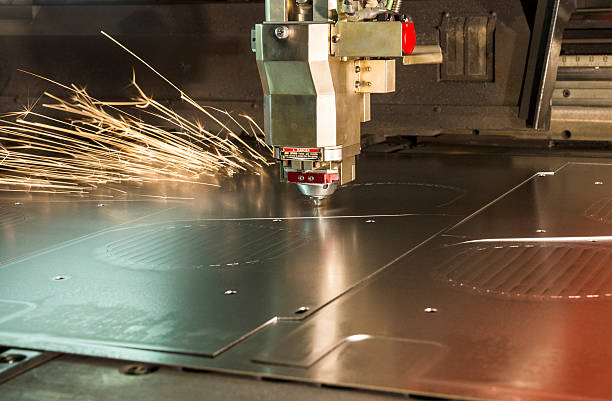
Laser generator
This device produces the laser beam that is used for cutting. Usually, a powerful light beam is produced by a gas or solid-state laser.
A series of mirrors known as laser optics are used to focus the laser beam on the cutting head. In order to cut precisely, the optics also focus the laser beam into a tiny point.
Cutting head
The cutting head is the component that directs the laser beam onto the workpiece. It typically has a nozzle that directs assist gas into the cutting zone and a lens that concentrates the laser beam.
Gas is delivered to the cutting zone by the assist gas delivery system, which helps remove molten material and enhances the quality of the cut. The two most popular helper gases used in the processing of these kinds of CNC machines are nitrogen and oxygen.
X-Y motion system
This system moves the cutting head across the workpiece.
Requires minimal operator interaction.
High production rates
CNC machines offer a high level of accuracy - CNC machines are known for their repeatability
Produces parts with minimal dimensional deviation.
Ability to make parts with intricate features that are not achievable with manual machines.
Modifying CNC programs is a breeze when it comes to accommodating design changes.
Minimizes the chance of human error - Enhances safety measures
CNC machines are more expensive compared to manual machines.
Operating CNC machines requires highly trained and costly labor.
Routine maintenance is necessary to ensure the optimal performance of CNC machines.
Downtime can be a major inconvenience, causing disruptions to production schedules and resulting in unexpected costs.
Discover the fascinating world of CNC with our comprehensive guide, providing you with a deep understanding of these incredible computer-controlled machines. By understanding the design, components, workings, and manufacturing processes of CNC machines, you will be equipped to make well-informed investment decisions. If you find the intricacies of CNC overwhelming, you can rely on us to handle your requirements. Our team of industry professionals specializes in all types of CNC machines. Embrace the CNC revolution that is reshaping manufacturing processes, and step into a future where precision and efficiency coexist.